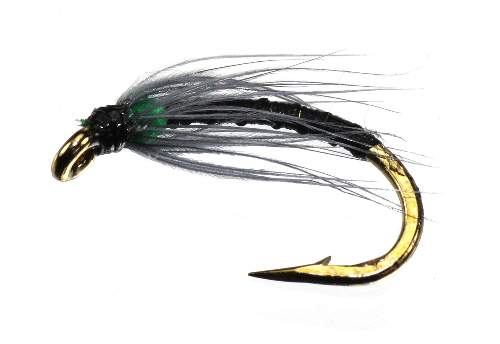An Introduction to Trout Wet Flies
 Trout wet flies are particularly useful for a common behaviour of the fish, which is the fact that the fish finds most of its food beneath the surface of the water. It does this sometimes by grubbing around the weed beds or by rising in the water to take nymphs and pupae on their way to the surface. Wet flies fall into various categories, such as the larval and pupal forms of aquatic insects; others imitate swamped still-born flies or even drowned adults. Some wet flies imitate drowned terrestrials like beetles. But the “fancy” or attractor flies do not represent anything in the natural world; these flashy creatures are designed so as to stimulate the trout and tempt it to take the bait out of curiosity or anger. Another type of fly has a silvery body and can emulate small fry.
Trout wet flies are particularly useful for a common behaviour of the fish, which is the fact that the fish finds most of its food beneath the surface of the water. It does this sometimes by grubbing around the weed beds or by rising in the water to take nymphs and pupae on their way to the surface. Wet flies fall into various categories, such as the larval and pupal forms of aquatic insects; others imitate swamped still-born flies or even drowned adults. Some wet flies imitate drowned terrestrials like beetles. But the “fancy” or attractor flies do not represent anything in the natural world; these flashy creatures are designed so as to stimulate the trout and tempt it to take the bait out of curiosity or anger. Another type of fly has a silvery body and can emulate small fry.
Many wet flies have their equivalents in dry flies. But, by using heavier hooks, softer hen hackles instead of those of the cock and, in the case of winged flies a backward-sloping wing, changes a dry fly into a wet one. Some fishermen will tell you that nymph patterns are seldom successful on wild streams, though they can work well on chalkstreams. But it’s worth trying the traditional, soft-hackled wet flies in conditions like these. On the other hand you might decide to challenge conventional wisdom and test your own skills with a range of different



















